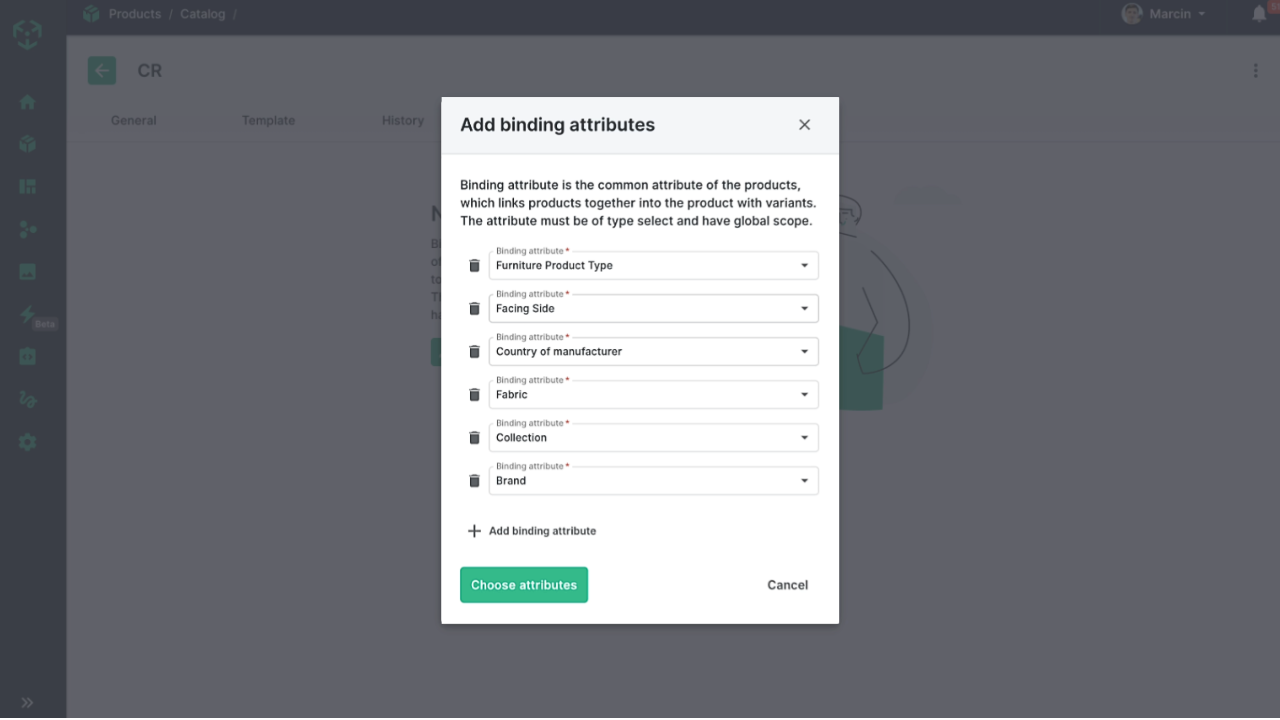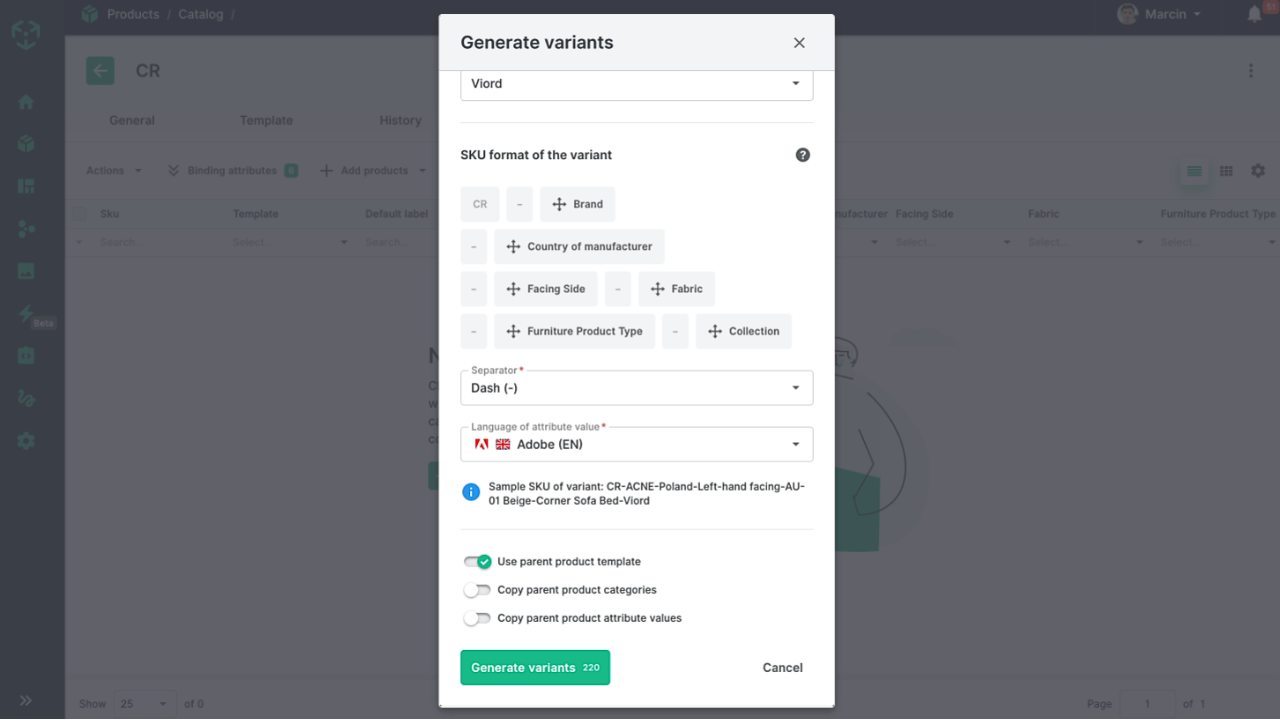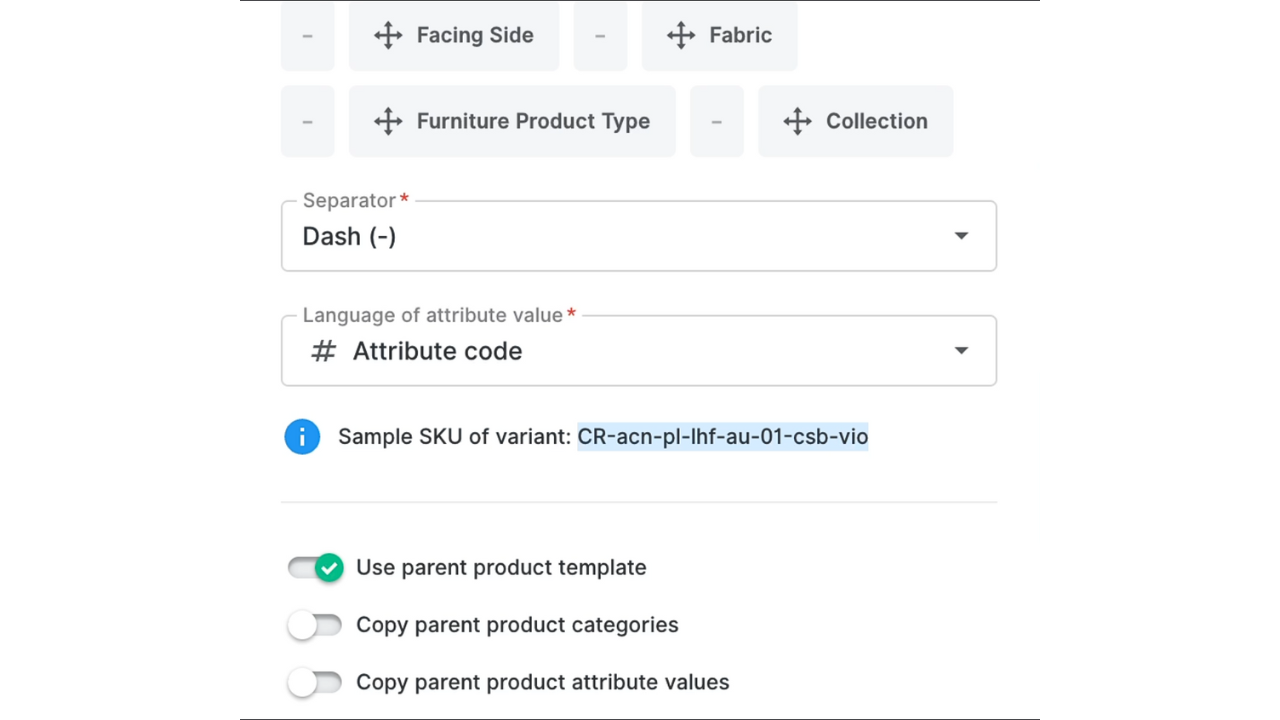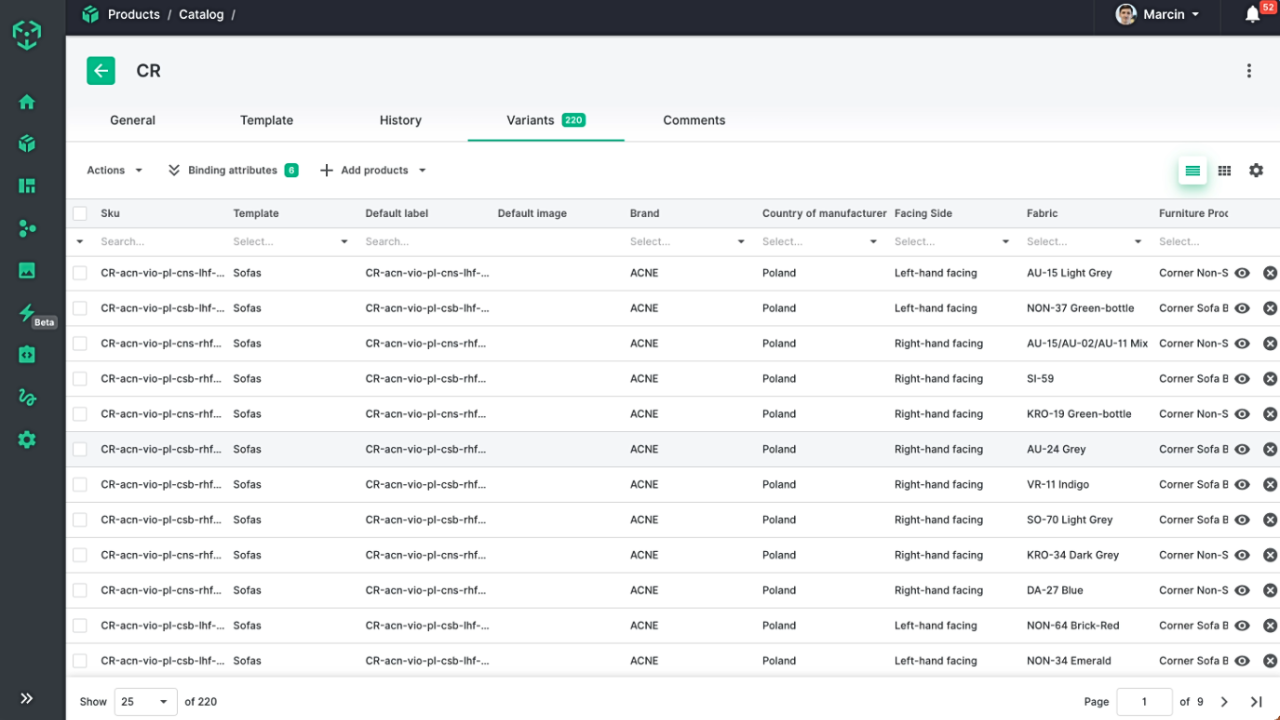Cracking the SKU Code: Why Structure Is Everything in PIM

Managing a large product catalog? Especially across multiple systems? Your SKU format isn't just a label—it's a silent hero in product data management. In collaboration with our partner, Tebim PrestaShop agency, this article breaks down why SKU structure matters, how it affects your workflows, and how to build it smartly using Ergonode PIM.
What Is an SKU?
An SKU (Stock Keeping Unit) is an internal product identifier designed to keep inventory and catalog data organized. Unlike global identifiers like EANs or UPCs, SKUs are tailored to your internal logic, reflecting how you organize, categorize, and process products.
A well-structured SKU system goes beyond naming products. It enables smoother workflows, cleaner integrations, and future-proof scalability.
The Role of SKU in eCommerce and PIM Systems
As eCommerce has grown, so has the importance of SKU numbers. Originally used for warehouse tracking and ERP systems, SKUs have evolved into essential identifiers across online stores and marketplaces.
In today's eCommerce environment, SKUs aren’t limited to warehouse tracking. They're key to maintaining data consistency across online stores, ERPs, marketplaces, and especially Product Information Management (PIM) systems.
A logical SKU structure in a multichannel setup:
- Simplifies product synchronization
- Prevents duplication and data drift
- Improves cross-platform compatibility
In short: SKUs power your entire product flow.
Why the SKU Format Matters
There’s no universal standard for how SKUs should be formatted—every company can (and should) define its own rules. And while that flexibility is great, it also means the structure of your SKUs can either make your operations run smoother or cause avoidable chaos.
Too often, e-commerce teams default to supplier-provided SKUs. But supplier codes tend to lack consistency, because there’s no need to do so on their end.
This leads to:
- Code duplication
- Data migration difficulties
- Connection problems with PIM or marketplaces
The better approach:
- Treat supplier SKUs as secondary references
- Build a custom internal SKU system tailored to your catalog structure
When you combine a smart SKU strategy with a powerful PIM system, you eliminate guesswork, reduce manual work, and gain control over your product data.
Structuring your SKU
Time to dig into details.
Since SKU is an internal-only code, it is a great first step to introduce order in your product data. In fact, you can embed very specific information about each product in this one sequence. A properly constructed SKU number can encode the following information:
- product line or series
- brand or manufacturer
- product category
- warehouse location
- variant (e.g., size, color)
- quantity per package
Think of your SKU format as a compact summary of each product—easy to read, easy to sort, and easy to integrate across systems.
Example SKU Structure
Creating your own SKU format starts with understanding the key characteristics of the products in your catalog. Each section of the SKU should reflect a specific product attribute—making it easy to decode, manage, and scale.
Consider a format that has the following pattern:
AA-BBBB-CC-DDDD
In this SKU structure:
- AA represents the product category (e.g., "SH" for shoes)
- BBBB captures the unique product number (e.g., "1234" for a specific model)
- CC indicates the warehouse shelf or storage location (e.g., "A1")
- DDDD provides additional internal categorization, such as collection, season, or version
Best practices
When designing your format, keep these practical tips in mind:
- Avoid special characters (like !, %, &, or # — they can cause issues with imports, processing, or even tagging in AI tools)
- Stick to alphanumeric characters, hyphens, or underscores — these are safe, readable, and system-friendly
- Keep it intuitive — abbreviations should make sense at a glance (e.g., "BK" for backpacks, "SU" for summer)
- Plan for growth — make sure each segment of your SKU has room to expand as your catalog scales
- Check marketplace rules — platforms like Amazon, Kaufland, or Allegro may have their own SKU guidelines, so make sure your format is compliant
Spending time on your SKU structure can have immediate effect. Let’s look at this example in the context of Ergonode PIM.
Creating an SKU structure in Ergonode PIM [with screenshots]
Let’s explore how to implement a structured SKU format directly in Ergonode PIM, using a real-world example: a modular sofa with multiple variants.
Step #1: Define Your SKU Components
First, decide which attributes will make up the SKU. For our sofa product, we chose:
- Product type (e.g., corner sofa bed)
- Brand (e.g., ACNE)
- Country of manufacture (e.g., Poland)
- Facing side (left-hand or right-hand)
- Collection (e.g., Viord, coded as "vio")
- Fabric (with its code, e.g., AU-01 Beige)
Note: This setup assumes that attributes have been created and saved earlier.
Step 2: Create the Product and Add Variants
Because our product has multiple variations, we’ll add it as a product with variants.
One such combination might look like this:
- Type: Corner Sofa Bed
- Brand: ACNE
- Country: Poland
- Facing: Left-hand
- Collection: Viord
- Fabric: AU-01 Beige
After the product is created, we’ll head to Variants, and look for the attributes that we listed before. These are called binding attributes.

The screenshot below provides a glimpse into the structure of the SKU. As of now, the sample SKU variant will have the following structure:
CR-ACNE-Poland-Left-hand-facing-AU-01 Beige-Corner-Sofa-Bed-Viord
This means that a variant of our product is produced by ACNE in Poland, this is a left-hand facing corner bed sofa, made of fabric with a code AU-01 Beige. It’s part of the Viord collection.

Step 3: Switch to Attribute Codes
We’ll change one more thing. As of now, the default setup uses names of attributes. They can be long, descriptive, and in case of more complex sets of attributes - simply impossible to work with. That’s why we will use codes. We switch “language of attribute value” to “attribute code”.
Now, this:
CR-ACNE-Poland-Left-hand-facing-AU-01 Beige-Corner-Sofa-Bed-Viord
turns into this:
CR-acn-pl-lhf-au-01-csb-vio
After swapping positions of specific SKUs in the pattern, we end up with a well-structured SKU system that provides embedded information about a few essential attributes.

Step 4: Automate Variant Generation
Take a look at the green button in the screenshot above.
With the SKU pattern ready, Ergonode can generate all possible variant combinations based on your selected attributes. For example, with 50 fabric options, you might instantly create over 200 SKUs.

SKUs and Ergonode PIM correlation
Earlier this year, Ergonode PIM has introduced Automations - sequences that you can use to speed up the process of working with your product data. A detailed description can be found in our guide article and the documentation.
The SKU code can be used when creating automated sequences in Ergonode PIM.
When your SKU has embedded product information like we suggested above, then your sequence can look like this:

What does it mean?
All new products whose first two letters of the SKU code are “SH” will be automatically added to the shoes category. All the other bits of the code can also be used in separate sequences.
Result?
Your team doesn’t have to click through thousands of products, but gets a massive boost by automated category assignment.
Key Benefits of a Proper SKU Code
What other benefits should you consider? Take a look below.
1. Faster Product Identification
A structured SKU helps quickly identify a product across systems—from your ERP to your warehouse to your storefront.
2. Better Communication
A shared SKU format ensures alignment between teams, partners, and suppliers, even when catalogs evolve.
3. Smoother Integrations
A consistent SKU system simplifies syncing between platforms (PIM, ERP, eCommerce) and reduces errors.
4. Efficient Warehouse Management
SKUs can embed location or inventory logic, improving order accuracy and picking efficiency.
Final Thoughts
A structured SKU system is one of the cornerstones of good product data management. It impacts everything from catalog maintenance to automation and multichannel expansion.
If you're scaling your product line, syncing data across channels, or introducing automation, it's time to treat your SKU format as a strategic asset.
Need help designing your SKU system in Ergonode? Our team is here to help—get in touch or explore our full capabilities.
Additional information
The article is based on the original material created by Tebim PrestaShop agency.
Tebim PrestaShop agency is a partner of Ergonode - get to know their offer and choose them as your PIM implementation partner.
Other insights






